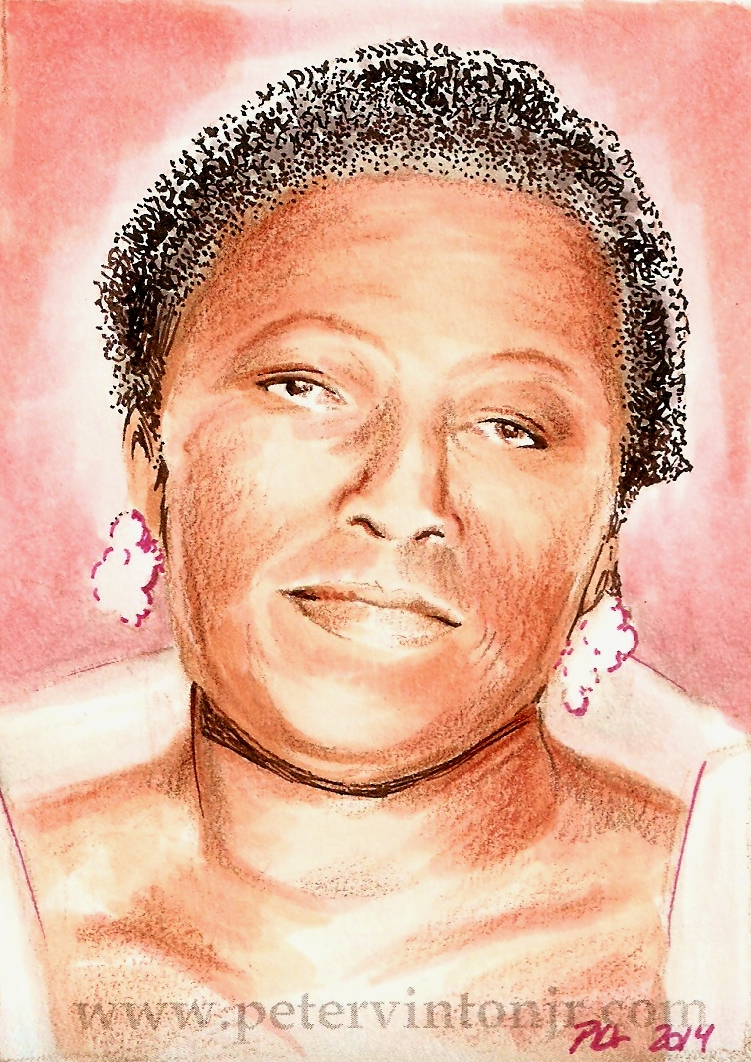
An ongoing illustrative history study
This piece originally posted 5/23/2024
Prelude | 146 | 147 | 148 | 149 | 150 | 151 | 152 | 153 | 154 | Email |
|---|
"It is very inspiring to release a figure from a piece of stone or wood. Very often, I look at (the) stone or wood for a year or longer. I will have completed the piece mentally before attacking the material."
You, or someone nearby to you, are very likely carrying around a Selma Hortense Burke sculpture in your pocket at this very moment.
Born in 1900 in Mooresville, North Carolina into a family of ten, Burke attended what would eventually be known as Winston-Salem University, where she unleashed her passion for art but decided that nursing was the more practical path to follow, and became an RN in Philadelphia in 1924 at the prestigious St. Agnes School of Nursing. It might be argued that this was correct choice at the time --certainly the career of a nurse provided much greater financial stability during the Great Depression-- but ultimately Selma's interests swung back to art and in 1935 she moved to New York.
It wasn't long before the Harlem Artists' Guild found its new star sculptor and teacher, and in very short order Selma was travelling throughout Europe --not only honing her skills, but also teaching and lecturing. In 1933 she received the Harmon Foundation award, cementing her role as one of the most influential artists of the Harlem Renaissance. In 1940 she secured an M.A. (Fine Arts) from Columbia and founded the Selma Burke School of Sculpture in New York City. During World War II Selma enlisted in the U.S. Navy --one of the very first Black women to do so. While she saw no overseas action, she worked on base at the Brooklyn Navy Yard, and it was while there she learned of a New Deal art competition to depict a likeness of then-President Franklin Delano Roosevelt in celebration of the "four freedoms." Burke worked for two years on a bronze relief portrait, which not only won the competition (and to this day hangs in the Recorder Of Deeds Building), but in 1946 would become the basis for a specific denomination of U.S.-issued currency.
In other words, Burke's artwork is on the U.S. dime.*
Burke's career certainly didn't stop there; in 1968 she founded the Selma Burke Art Center in Pittsburgh, which continued her mission of introducing art opportunities to disadvantaged inner-city youth. Amongst her many subjects have included likenesses of Duke Ellington, Mary McLeod Bethune (Lesson #49 in this series), and A. Philip Randolph (Lesson #68). Her work is on display at the Smithsonian, in Charlotte (significantly a nine-foot statue of Martin Luther King, which she completed in her eighties), at the Spelman College Museum of Fine Art in Atlanta, and at her beloved Winston-Salem State University. In 1979, President Jimmy Carter presented Burke with a lifetime achievement award from the Women's Caucus for Art. She died in 1995 at the impressive age of 95.
Visit the Arrowmont School of Arts And Crafts for a comprehensive visual record of many of Burke's pieces, including the Sept. 24, 1945 unveiling of her FDR sculpture by President Harry Truman.
* - No, it wasn't John Sinnock --even the U.S. Mint now acknowledges this plagiarism. Credit-stealing was and is still a thing, with Black artists.
Next page - Lesson 151: Benjamin O. Davis, Sr.